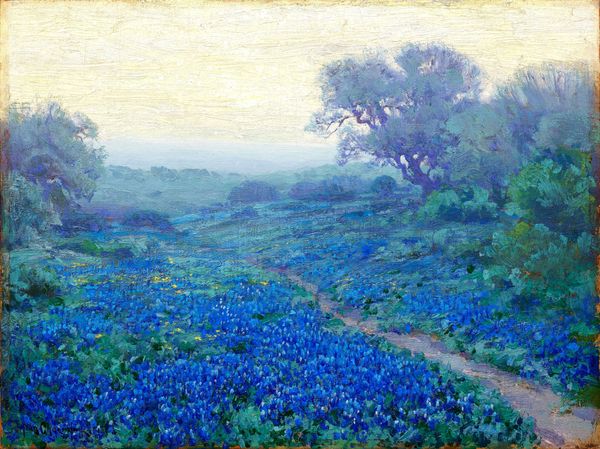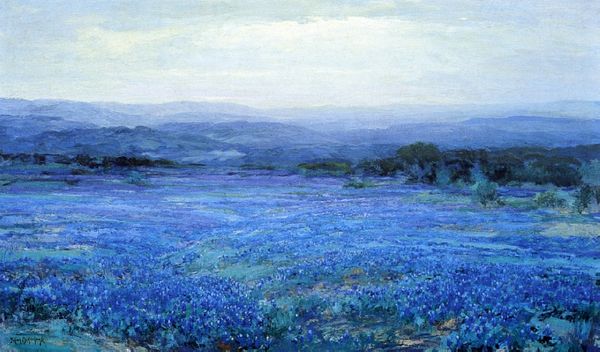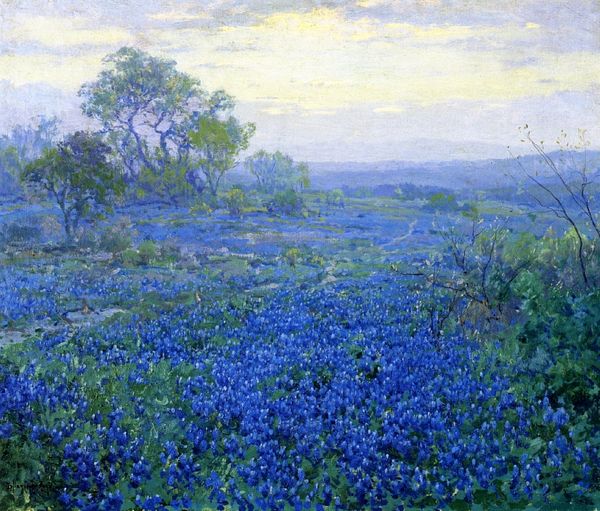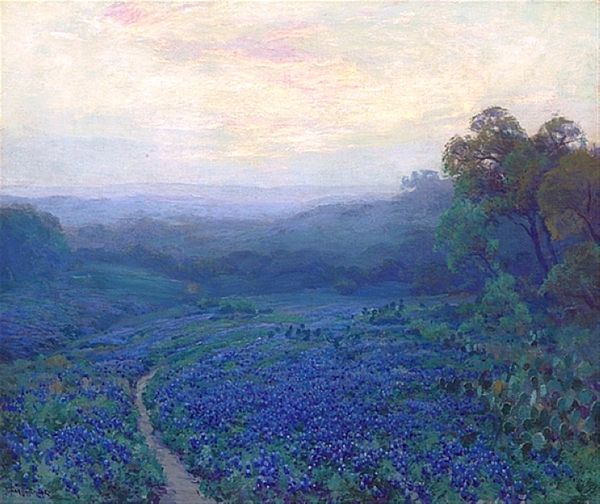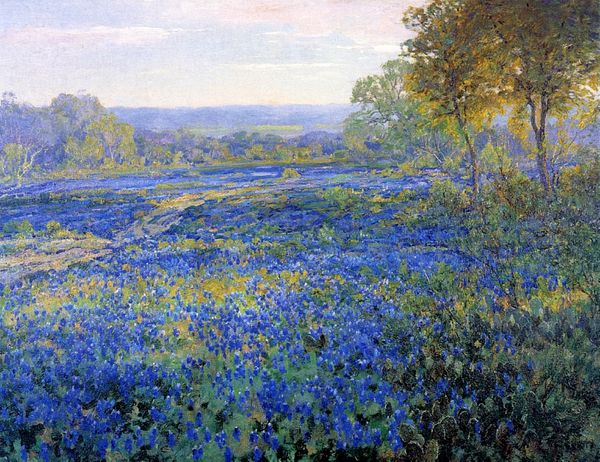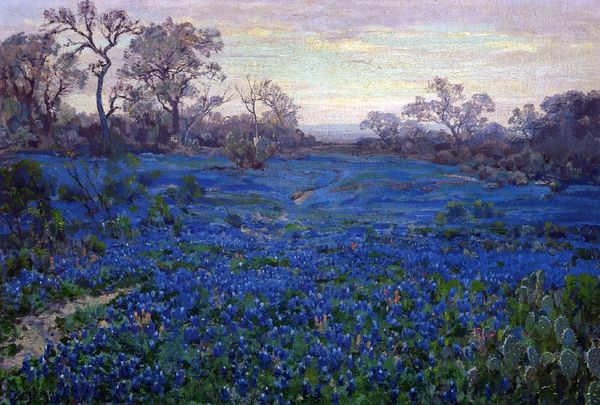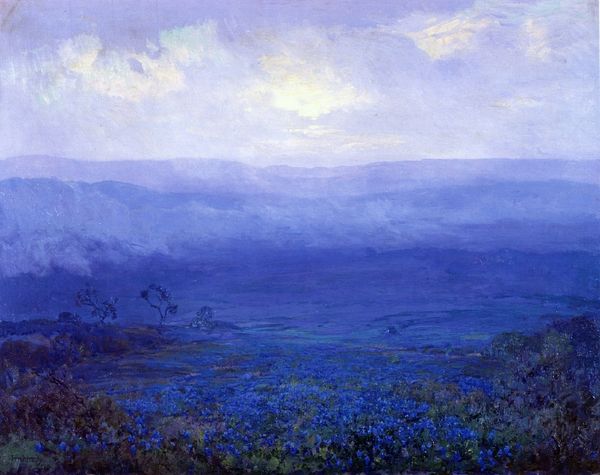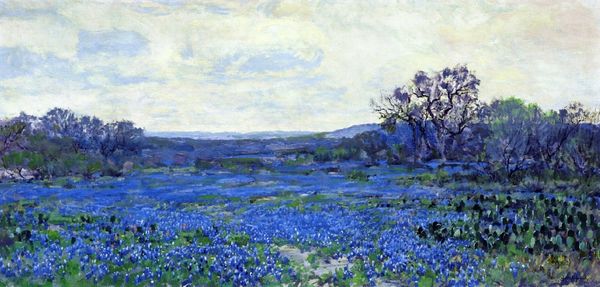
painting, plein-air, oil-paint, paper
#
tree
#
impressionist
#
painting
#
impressionism
#
plein-air
#
oil-paint
#
landscape
#
flower
#
impressionist landscape
#
paper
#
nature
#
plant
#
nature
#
realism
Copyright: Public domain
Editor: This is Robert Julian Onderdonk's "Bluebonnet Landscape with Catci, Road and Mountain Laurel." It’s an oil painting, and the cool tones really give it a calming feel, like a peaceful early morning. How do you interpret this work? Curator: Immediately, I see a symbolic return to nature. The bluebonnets aren’t just flowers; they're almost a collective memory, a romantic ideal of the Texan landscape. Notice how the path cuts through this field of blue. Does it lead us towards something? What is the horizon promising us? Editor: That's interesting, I didn’t really think of it like that. What do you mean by "collective memory"? Curator: Well, think of landscapes as more than just scenery. They embody cultural identity. The repeated imagery of bluebonnets, the specific way Onderdonk uses light – they all contribute to a shared idea of "Texas." The path itself is archetypal: the journey, transition... Where does it invite us to go, emotionally, psychologically? Editor: So it's not just a pretty picture, it's about the deeper meanings we attach to it. Curator: Precisely. It speaks to our relationship with nature, our yearning for simpler times, and the idealized past. Do the cacti contribute to a sense of otherness? Are they guardians of a particular visual language? Editor: I never considered the cacti as having their own significance; they're just sort of there. Now I’m wondering if they speak of the endurance needed to live here, in Texas, the harshness, in contrast to the softness of the blooms. Curator: Indeed. It makes one wonder what symbols artists are consciously – or unconsciously – weaving into their work and into our perception.
Comments
No comments
Be the first to comment and join the conversation on the ultimate creative platform.
